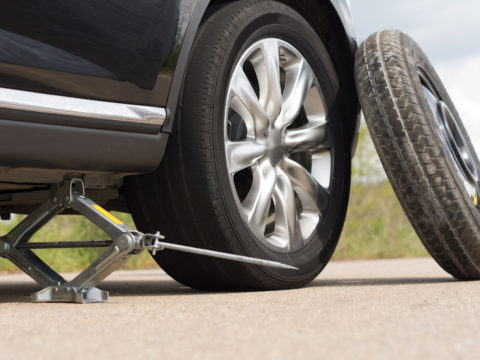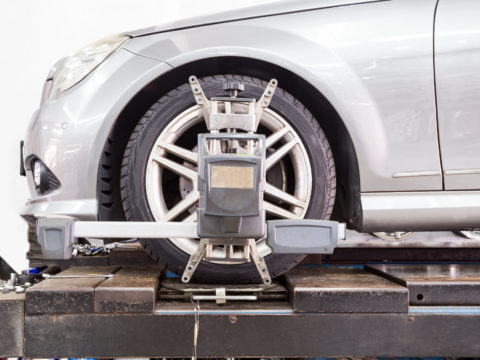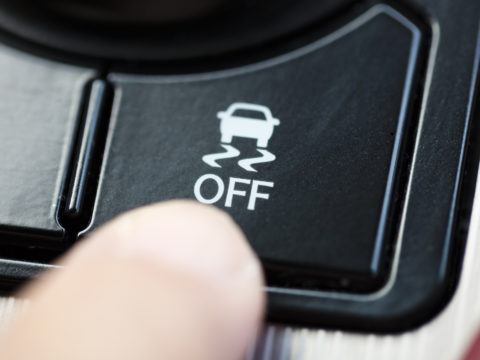If you’ve ever seen your TPMS or Tire Pressure Monitoring System turn on while you’re driving, it means you have low tire pressure. But should you keep driving on it? Read this article to learn about the consequences of driving with low tire pressure.
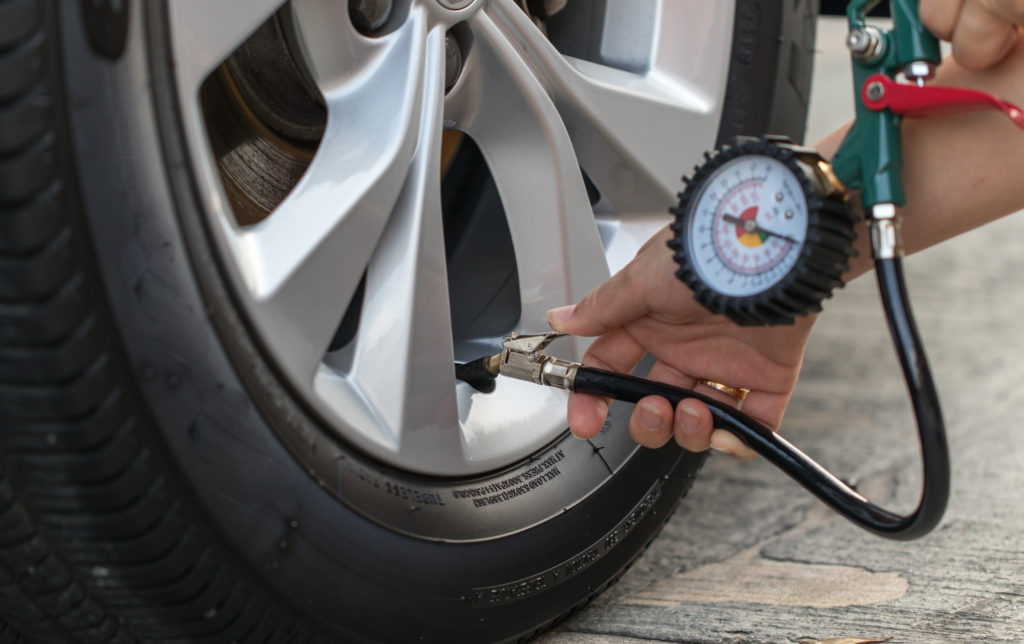
Contents
Can You Drive Your Car with Low Tire Pressure?
Technically, a car will operate with low tire pressure. However, you cannot drive safely in a car with low tire pressure.
Many people do it every day, but we urge you not to fall into the bad habit of ignoring the tire pressure warning.
Should You Drive with Low Tire Pressure?
No, you should not drive with low tire pressure. While many people notice low tire pressure signals, they often ignore them. This action is immensely dangerous as more than 11,000 tire-related car crashes happen in the US every year.
There are emergencies where you have low tire pressure and may just be trying to get home. Luckily, the car will operate even with low tire pressure, but in these situations, you should drive very cautiously and as little as possible.
What Is Considered Low Tire Pressure?
The lowest acceptable level of tire pressure is 20 PSI. PSI stands for pounds per square inch and refers to the weight of pressure within the inflated tire.
The recommended level of tire pressure falls between 32 and 36 PSI, depending on the size of vehicles and tires. Having tire pressure between 20 and 30 PSI is considered low tire pressure.
How Low Can Tire Pressure Be and Still Drive?
The lowest your tire pressure can be while still being drivable is 20 PSI. Driving on 20 PSI inflated tires isn’t the best, but it should be safe, and you shouldn’t suffer any drastic tire issues unless the air continues to leak out, dropping below 20 PSI.
How Long Can You Drive with Low Tire Pressure Warning?
You should not drive on low tire pressure warning for very long or far. However, if you need to, consider how the acceptable distance varies with the different conditions below.
On Paved Roads
As discussed, on paved roads under ideal conditions, you should not drive farther than 50 miles or longer than one hour when your tires have low pressure.
Offroad
Don’t drive offroad with low tire pressure, and if you have to, don’t do so for more than 10 minutes or 10 miles. Driving offroad with low pressure could end with you stuck somewhere in the woods.
On Snow/winter
Tires struggle more when snow is on the ground anyway. It’s harder to get traction and roll forward, so low tire pressure makes it even worse. Do not drive farther than 40 miles or longer than 30 minutes with low tire pressure under these conditions.
In Summer
While summer means no snow, it also means more heat. When driving on low tire pressure in the summer, it’s important you go very slow and don’t drive for longer than 30 minutes, or you risk overheating and blowing out a tire.
How Fast Can You Drive with Low Tire Pressure?
When driving on low tire pressure, you risk tire failure leading to a severe accident. The fastest you should ever drive with low tire pressure is 50 miles per hour.
Any faster than 50 mph, and you put your life at risk. However, 50 mph is the absolute ceiling, and we recommend you drive as slowly as possible when driving with low tire pressure.
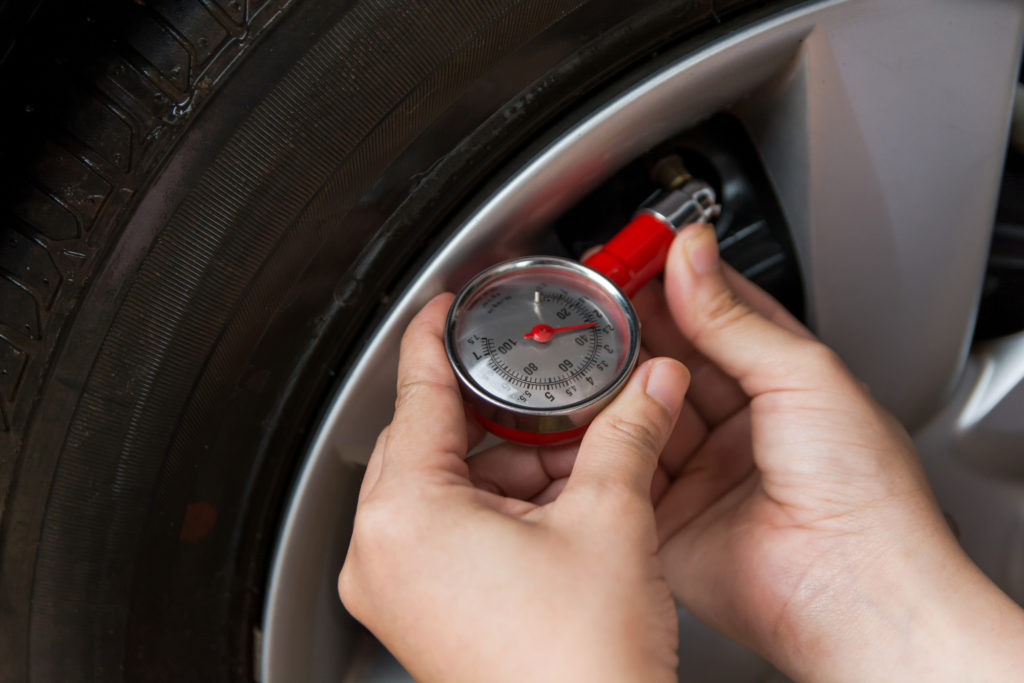
What Does Driving with Low Tire Pressure Do?
There are several consequences of driving on low tire pressure, some more severe than others. Read below to understand what can happen if you drive with low tire pressure.
Blown Tire
A blown tire is the most severe consequence of driving on low tire pressure. When your tires have reduced pressure, and you drive at high speeds, this can cause the chemicals in the tire to break down, and the tire can disintegrate.
Another consequence can be the rubber in the tires coming too close to one another, resulting in friction that leads to an overheated tire. When either of these things happens, the tire will likely blow out, putting you in a very dangerous situation.
Poor Performance
When the tires lose air pressure, the car’s performance suffers. When you brake or round a corner, the sidewalls of the tire flex more than they should, making driving more difficult and uncomfortable.
Turning becomes sloppy, braking becomes slower, and these issues could lead to an accident if you need to swerve suddenly or are on roads during rough weather conditions.
Low Mileage
When your tires are slightly deflated, it increases the resistance that your car’s engine needs to push through. The less tire pressure you have, the harder the engine has to work. Therefore, your engine will use up gas much faster than when the tires are full.
A perfect circle can roll along a road easily, but an oval will need more force to roll forward. This principle applies to a deflated tire too.
Reduces Tire Life
Driving at low tire pressure at high speeds or for an extended time will shorten the life of your tires. The life of your tires is much less important than a tire blowing out on the highway and far less dangerous.
However, no one wants to replace their tires more than they have to, as tires are pricey. Putting air in your tires when low on pressure is easier than replacing all four tires.
Tips On How to Drive with Low Tire Pressure
Keep these tips in mind if you find yourself stranded somewhere with low tire pressure.
- Remove any extra weight in the vehicle, like luggage or other items.
- Drive well below the speed limit, especially if weather conditions are bad.
- Don’t drive more than about 50 miles. The less you drive, the better off you will be.
- Stay in the right lane the whole drive so you can quickly pull over if something goes wrong.
- Keep your hazard signal and emergency lights on to encourage other drivers to steer clear of you for safety.
Is It Illegal to Drive on a Flat Tire?
Yes, driving on a flat tire is against the law. Your tires must be inflated to appropriate pressure levels to follow the road laws.
How to Fix Low Tire Pressure
Fixing low tire pressure is easy! You can fill your tires with air at almost any gas station. If you have a tire with a leak or hole, that’s a different story, and you’ll need to replace the tire.
For emergencies, there are portable tire inflators that you can carry with you in your vehicle. Check out some of the best portable emergency tire inflators so you can stay safe on the road!
The Fanttik tire inflator is a top-of-the-line product that is compact and well-designed.
The AutoOmmo air compressor is one of the easiest to use on the market, so you don’t need to be an auto expert to inflate your tires in an emergency.
The Moyidea compressor is super inexpensive and simple to use. The Moyidea compressor is ideal for someone that wants to be prepared without breaking the bank.

